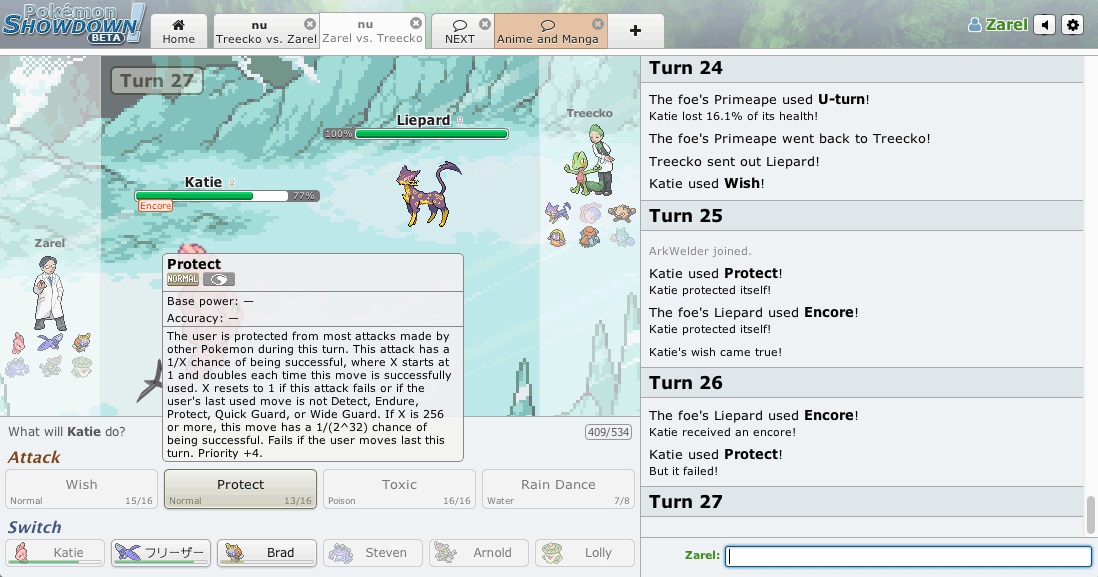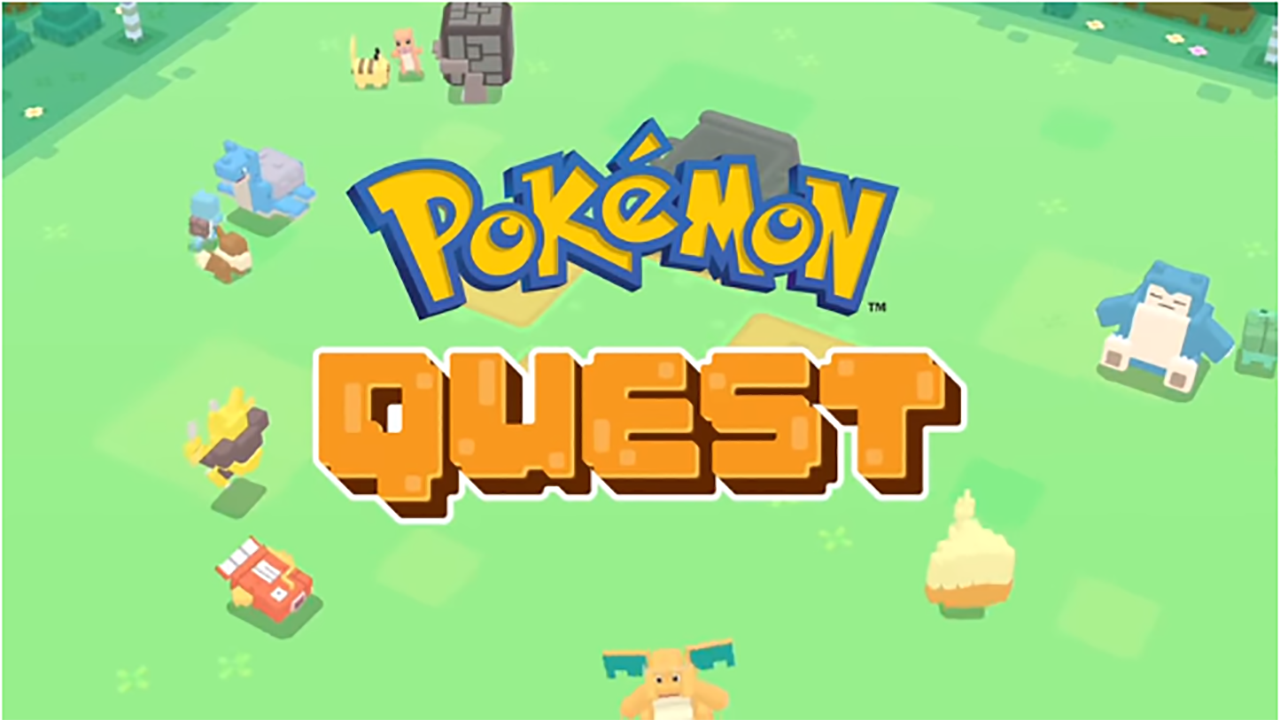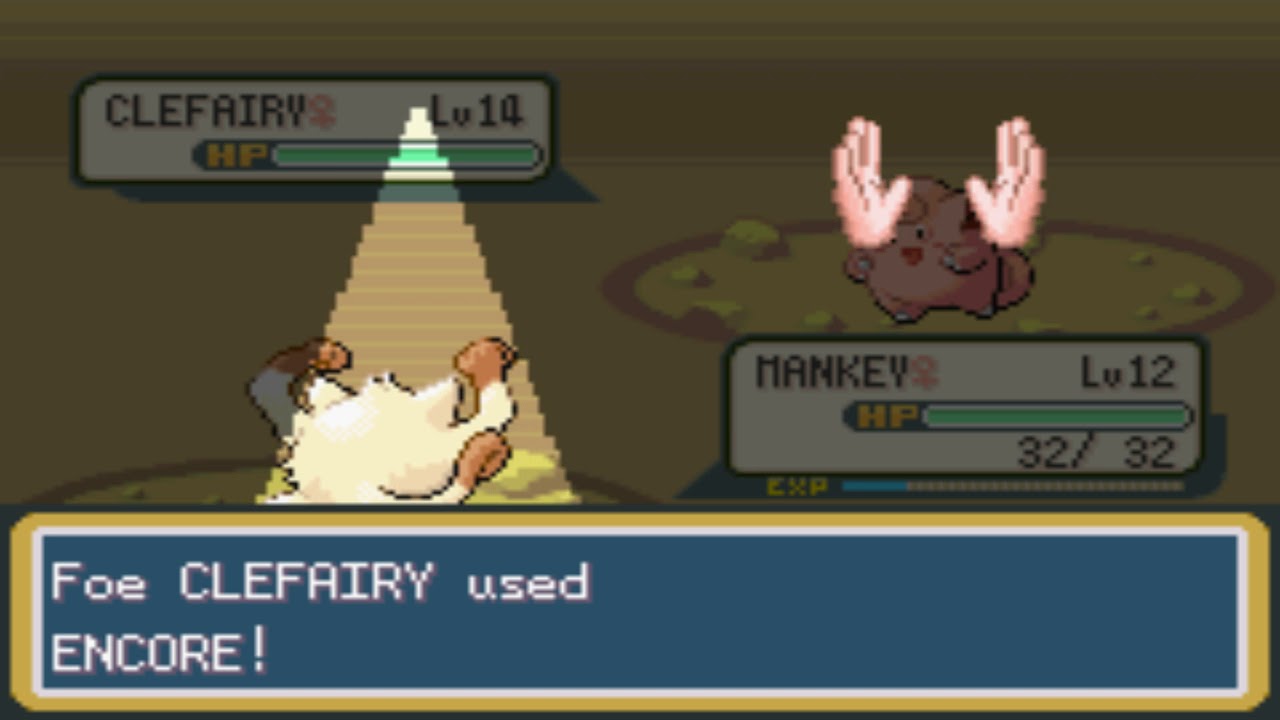Game Freak has always kept the competitive spirit of Pokémon alive and well with their frequent tournaments. The Video Game Championships (VGC) is a popular form of competition that is hosted by the Pokémon Company itself. We’ve even created a complete beginner’s guide to help you get started in becoming a VGC master. However, there are other competitive formats as well. If you’ve begun looking into competitive Pokémon before, then you have probably heard of a site called Smogon. While the Pokémon Company hosts VGC tournaments, Smogon is an independent fan-made company that hosts its own frequent tournaments. These are the two main platforms that you’ll be able to find competitive players to battle, as both types of players tend to utilize the online battle simulation system of Pokémon Showdown. Unlike VGC rules, Smogon has created tier lists for Pokémon, allowing for a diverse range of tournament formats. Here is an easy guide to each format along with some general tips.
What are Pokémon Smogon tournaments?
Main tiers and competitive formats

As stated before, there are two main organizations that handle competitive formats, Smogon and The Pokémon Company. Smogon divides their formats into tier lists based on how often a Pokemon is used (such as OverUsed and NeverUsed). Conversely, The Pokemon Company (competitively known as Play! Pokémon) has one fixed format of competitive battling (Battle Spot), and one that varies year to year (VGC). Here are the main formats for each:
Play! Pokémon
- VGC
- This is their main format for regular tournaments within their championship league. The rules change every year, though they roughly follow the same pattern as Battle Spot Doubles. More information can be found about this format from our VGC guide.
- Battle Spot Singles
- This format consists of each player being given 120 seconds to view each other’s team of six Pokémon. Then both players get to choose three of their Pokémon to use in a single battle against their opponent. The banlist is the standard banlist for Play! Pokémon, meaning mostly mascot legendaries and mythical Pokémon.
- Battle Spot Doubles
- This format is essentially the standard base format for VGC tournaments. Each player chooses four of their six Pokemon to battle against each other, after seeing each other’s original six. The banlist is the standard banlist for Play! Pokémon, meaning mostly mascot legendaries and mythical Pokémon.
- Battle Spot Special
- The only Battle Spot format that changes regularly. “Special” indicates special rulesets. This typically means an altered banlist, such as allowing mythical Pokémon, which are customarily banned in Play! Pokémon formats.
- Note: Smogon provides guides and information on each of these formats, and manages them on the Pokémon battle simulator, Pokémon Showdown. Play! Pokémon manages them within the actual game consoles, and on the official Pokemon.com website.

A beginner’s guide to Pokémon Quest
Get started ►Smogon
- ZeroUsed (ZU)
- Technically this tier is still being created, so there aren’t many official tournaments for it yet, and the name and Pokémon within the tier are subject to change. That said, it will consist of Pokémon that have an incredibly low percentage of usage among all tiers and competitive formats. It is currently unclear what the ZU meta will look like once it’s been released, but you will definitely find the weakest Pokémon in this tier.
- PoorlyUsed (PU)
- This is currently the lowest tier until ZU is officially released. Pokémon in this tier tend to be more gimmicky than some of the others, as it is more difficult to rely on standard strategies when there aren’t many powerful Pokémon within the tier. Only ZU and PU Pokémon are allowed in this tier.
- NeverUsed (NU)
- The second-lowest tier currently, and one of the more standard ones among players who like using undervalued Pokémon. While there are still Pokémon that rely on gimmicks at this stage, there are many standard roles here. You’ll often see weaker versions of a higher tier Pokémon in the NU tier. For example, Clawitzer and Mega Blastoise have the same ability and function the same way, but Clawitzer is NU because it is essentially the weaker option. ZU, PU, and NU Pokémon are all allowed to be used in this tier.
- RarelyUsed (RU)
- While less popular than some of the other formats, Pokémon in this tier start to be more formidable. There are even Pokemon in this tier that are viable to be used in higher tiers like OU and Ubers. These Pokémon tend to follow ZU, PU, NU, and RU Pokemon are allowed in this tier.
- UnderUsed (UU)
- One of the more common formats, UU is full of Pokémon that are just below standard usage. Many of the Pokemon in this tier are fairly powerful, but have direct competition with an OU Pokémon that just does their job better.
- For example, Blissey and Chansey do the same exact thing. They are both used as Special Defensive walls. However, Chansey actually does this better, since it can hold an item called Eviolite which boosts the defenses of non-fully evolved Pokémon. This is why Chansey is an OU Pokémon while Blissey is in UU.
- This tier is also where the majority of Pokémon are first able to be used, making it a fairly large tier with some versatility. Any Pokemon in ZU, PU, NU, RU, or UU can be used in this tier.
- OverUsed (OU)
- This tier is often considered the standard format for Smogon and Single battles in general, since it consists of commonly powerful Pokémon that aren’t innately overpowered.
- Any Pokémon that are not in Ubers or AG are allowed in this format.
- Ubers
- This tier is commonly seen as the legendary tier among new players, as most powerful legendary Pokémon are in this format.
- All Pokémon besides Mega Rayquaza are allowed in this format.
- AnythingGoes (AG)
- This tier was specifically created for Mega Rayquaza, who was considered too powerful for Ubers at the time.
- Essentially this tier removes many standard balancing rules, including any individual Pokémon restrictions. Any Pokémon can be used, and none of Smogon’s general rules apply (except for their Endless Battle Clause).
- BorderLine (BL)
- Borderline Pokémon exist between two formats. There are usually only a few Pokémon between formats, which is why these Pokémon don’t have their own standard tournament tier.
- An example of a Borderline Pokémon is one that is too strong to be in UnderUsed but too weak to be in OverUsed. This would put the Pokemon in the UUBL tier.
- Little Cup (LC)
- This format is unique, as it consists of unevolved Pokémon at level 5. The rules are a bit unique, as some of the standard Smogon rules do not apply to this format (such as the Item Clause). Additionally, the banlist of Pokémon consists of any Pokémon that has already evolved or can not evolve at all. Extremely powerful first stage Pokémon, such as Scyther and Yanma, are also not allowed.
- Doubles OU, UU, and Ubers
- These formats work the same way as the formats they are named after, except they are double battles instead of single.
(Note: Battle Spot formats can be found within the games’ online match modes, while VGC is exclusive to Play! Pokémon sponsored tournaments. All of those formats, along with Smogon’s can also be accessed for battle simulation on Pokemon Showdown. Smogon formats, unlike Play! Pokémon, have no in-game mechanic to enforce them, and are typically used in private tournaments).
General rules:

As with everything, the Pokémon Company and Smogon have very different rules from each other. That said, each of them tends to follow the same guidelines within their formats. Here are the general rules for each:
Play! Pokémon
- Time Limit – Each match can only last 30 minutes, with each player being given one minute for their turns. If they take too long, a random move will be selected. If the 30 minutes elapse before the match is resolved, the game goes to the player with more Pokémon still alive.
- Level Limit – Pokémon that surpass level 50 will automatically be brought down to 50.
- Species Clause – A team can’t have any more repeated Pokémon on it (this includes form changes. So you can only have one Rotom on your team, even if you have different Rotom forms).
- Item Clause – No Pokemon can hold the same item as another on their team
- Origin Marker – Depending on the game, Pokémon require a symbol that show they were born within that generation. Generation 6 uses a blue pentagon, while Generation 7 uses a black clover
- Banlist – In addition to the above rules, Play! Pokémon formats typically follow the same banlist of mascot legendaries and mythical Pokémon. In addition to these Pokemon, Mewtwo and Zygarde are also included in the typical banlist.
Smogon
- Species Clause – Same as above
- Item Clause – Same as above
- Evasion Clause – Minimize and Double Team are banned moves
- Swagger Clause – The move Swagger is banned
- OHKO Clause – One-hit Knockout moves are banned (for example, Fissure and Sheer Cold)
- Sleep Clause – A player can only have one Pokémon on their team put to sleep at a time. This means if a player switches out their sleeping Pokémon, you are not allowed to put the new Pokemon to sleep as well.
- Moody Clause – Pokémon aren’t allowed to have the ability Moody, even if they have access to it.
- Endless Battle Clause – A player can not force an endless battle. This is possible through a few different means, typically by stalling the opponent out by healing the player and opponent and not allowing them to do anything.
- Note, the reason this clause doesn’t exist in Play! Pokémon formats, is because they have a time limit instead.
As you can see, Smogon tends to focus on rules that prevent games to focus on chance, while Play! Pokémon tends to focus on rules that will prevent slow games.

Beginner’s Guide to Pokémon Let’s Go: Pikachu and Eevee
Read Now ►General tips on getting started
So now that you know how the formats work, where do you go from here? Well, first you should identify what format appeals to you. If you like fast double battles, and are willing to travel frequently for tournaments, then VGC would be a good format to look into.
Alternatively, if you prefer longer single battles, then you’ll probably be interested in a Smogon format. Since Smogon divides their formats into tiers, you will probably want to make teams for tiers that have Pokémon you want to use. OU is a good standard format to look into playing, at least while you’re getting started. This is because the range of Pokémon that are usable in this format is much larger than most of the others, and it is commonly considered the general format for singles tournaments (especially in more casual settings).
No matter which format you’re looking to play in, you’ll want to build a team around a coherent strategy. Weather and Trick Room teams are the easiest to create, since the main strategy of your team is easy to identify. This also means that other players will have some idea how to play against them. Don’t let that frighten you, though, as these teams are still powerful and easy to create. We recommend building a rain team around Pelipper, or a Trick Room team around Mimikyu. These are useful for both Play! Pokémon and Smogon formats (at least within the tiers that Smogon allows them in).

Beginner’s Guide to Competitive Pokémon
Read Now ►Status moves are your friend

This applies to both Smogon tournaments and Play! Pokémon. Many players will complete their entire Pokemon journey within the game without ever using a status move. This is easily accomplished, since most opponents can be defeated without them, and many of them won’t use status moves themselves.
In competitive Pokémon, however, this is far from the case. You will see status moves on practically every Pokémon, even purely offensive mons, like Gengar. The types of status moves you will see can vary greatly depending on the format you are competing in.
For example, entry hazards (moves that cause damage to a Pokémon when they enter the battlefield) are incredibly common in singles battles, but almost never seen in VGC formats. This is because entry hazards are hard to take advantage of in VGC, since there are only four Pokémon on a team, and two of them are out at a time. This means those entry hazards would only be useful against the two Pokémon that aren’t out at the beginning. This is a huge difference from single battles, where entry hazards are almost guaranteed to effect five Pokémon, making them much more useful.
Additionally, VGC battles go much faster than Smogon formats, as Smogon formats tend to have a lot of switching. Without that switching, entry hazards will rarely proc, making them pretty useless overall in VGC. Here are a few common status moves you will see in each format:
- Entry Hazards
-
- Examples: Stealth Rocks, Spikes, Toxic Spikes, Sticky Web
- As stated above, these moves are a Smogon standard and a VGC rarity. They each have their own benefits. Stealth Rocks and Spikes are typically more offensive entry hazards, while Toxic Spikes and Sticky Web provide team support. Stealth Rocks, in particular, is universally considered the most powerful entry hazard as it does incredible amounts of damage, especially on Pokemon who have a weakness to Rock.
- It should also be noted that since entry hazards are so useful in Smogon battles, so are entry hazard removers: Rapid Spin and Defog.
-
- Protect and similar moves
- Examples: Protect, Detect, King’s Shield, Baneful Bunker, Spiky Shield
- The general rule of thumb is: In single battles, practically no Pokémon use these moves, while in double battles almost every Pokémon has one. This is because you can use them to make your opponent waste their turn by successfully predicting what Pokémon they will attack in a double battle, giving the protector’s partner a free turn. In single battles, there are very few benefits and situations where you want your opponent to waste a turn that you also don’t get to do anything on. That is not to say they can never be used in singles, as highly defensive Pokémon can use this move to wait out a poisoned or leech seeded Pokémon’s health.
- Move Restriction moves
- Examples: Taunt, Torment, Encore, Disable
- These moves restrict your opponent’s options. Each one uses a different way to prevent your opponent from attacking. You can combine many of them to force your opponent to Struggle or switch Pokémon.
- Healing/Clerical moves
- Examples: Aromatherapy, Heal Pulse, Heal Bell, Wish
- As the name implies, these moves are particularly useful for healing and supporting your party. Usually, you’ll have one Pokémon that uses a few of these moves. Tanky Pokémon with large support movepools are popular choices for clerical Pokémon, like Blissey and Sylveon.
Pokémon roles

On competitive forums, you will often see Pokémon described as sweepers, walls, and clerics. These terms relate to a Pokémon’s primary use in battle. Here are some common roles you will see, and a few examples of them:
- Physical/Special/Mixed Sweeper
- A sweeper is a Pokémon whose primary job is to deal heavy amounts of damage. They are typically fast Pokémon (though there are slow bulky sweepers out there), who specialize in either Attack (Physical) or Special Attack (Special). There are a few Pokémon who can be a Mixed Sweeper as well (dealing both Physical and Special damage).
- Some examples include: Scizor with Swords Dance and Bullet Punch as a somewhat common physical sweeper; Gengar with Shadow Ball and Sludge Bomb for a special sweeper; and Lucario makes a potential mixed sweeper with Bullet Punch and Aura Sphere.
- Physical/Special/Mixed Walls
- A wall is the exact opposite of a sweeper. A Pokémon whose primary job is to have a strong defense. All walls have a mix of Special Defense, Defense, and HP, but many are inclined to be more physically or specially defensive. Walls can be incredibly useful for switching Pokémon in safely, and disrupting your enemy’s strategy. Many of them also have valuable status moves.
- A common special wall is Blissey, due to her naturally high Special Defense, while a common physical wall is Skarmory for the same reason but with Defense.
- Cleric
- Named after the healers of the RPG world, clerics are Pokémon with access to moves that can heal their team, such as Wish or Aromatherapy.
- Sylveon is just one of many Fairy Pokémon that can provide clerical support for their team. It has access to both Wish and Heal Bell.
- Supporter
- Supporter Pokémon are mostly status users. Their primary job is to use their status moves to provide support for the rest of their team and disabling their opponent. This can be accomplished through move-restricting and status-inducing moves like Thunder Wave and Encore.
- Pokémon with the ability Prankster are often used as supporters, since Prankster lets a Pokémon use a status move before any other Pokémon on the field. Whimsicott makes a great supporter for this reason, as it has access to common support moves like Taunt and Encore.
- Lead
- The first Pokémon to be sent out. Usually, you have a few of these on a team depending on your strategy. In single battles, entry hazard users are common lead Pokémon, as they can get out their hazards early into the game
- Aerodactyl is a powerful lead Pokémon, since it’s fast and has access to Stealth Rocks.
- Setter (Weather, Terrain, Room)
- On teams with a field-altering strategy, there has to be at least one Pokémon that sets up the weather/terrain/etc. These Pokémon are integral to the strategy of a team, and are often the first target of your opponent, so make sure to protect them effectively.
- Since there are many different types of field strategies, there are also many different types of setters. Pelipper and Politoed are common rain setters on weather teams, since they have access to Drizzle (an ability that activates Rain Dance once they enter the battlefield).
- Similarly, the Tapus are the best terrain setters, since they each have access to a different ability that sets up a terrain when they enter the battlefield.
- For Trick Room setters, you’ll want to use a bulky slow Pokémon, like Reuniclus, Slowbro, or Mimikyu (with Disguise active).
Of course, there are more roles than just these, but these are the most common. Ideally, your team will consist of a special sweeper, a physical sweeper, a wall or supporter, and any combination of three other Pokémon that fit your strategy. However, a full team of sweepers is not incredibly uncommon in Battle Spot games.
No matter how you decide to do your Pokémon journey, your first stop should be Pokémon Showdown to start creating teams and practicing against other players with them. There is no better way to learn than hands-on, so you should go out and see what other players are doing. You can learn all about the current meta in your format, and even start to raise in the ranks of Showdown itself.



